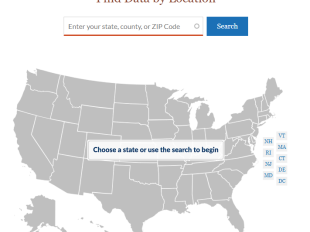Advancing narratives for public health: An example from Michigan
In October 2025, County Health Rankings & Roadmaps (CHR&R) hosted a webinar that highlighted ways for public health practitioners to communicate effectively and partner with the media and journalists. Public health practitioners can communicate accurate, trustworthy information, while elevating narratives that support decisions and policies important to the health of their communities. Narratives are value-based themes of stories that we use to understand our world. A narrative communicates and reinforces a worldview and engages people in considering their own understanding of the world around them.
One of the strategies suggested at the October webinar was writing an op-ed — and Norm Hess did just that. Hess is the executive director of the Michigan Association for Local Public Health (MALPH), a role in which he oversees the membership of public health departments across the state.
Concerned that the new Michigan legislature wanted to roll back funding for an already underfunded state public health infrastructure, Hess turned to communications advocacy. He wrote an op-ed on why public health is an investment worth making for Bridge Michigan, a nonpartisan news source in the state. He followed this up with another op-ed on how vital health services in Michigan are at risk for The Detroit News.
Hess shared that public health practitioners should take every opportunity to raise awareness about the importance of public health — not only for the public, but also for themselves: “A single op-ed doesn’t change everybody’s mind, but it is a good strategy to put in the mix… [a] theme I hear from local public health officers is that, ‘We just don’t feel heard. We feel like we don’t have a voice.’ I felt like that was really my charge to take a proactive, public-facing role in communications.”
In addition to op-eds, MALPH’s proactive communications have included passing out informational brochures, giving presentations, and monitoring the media to identify trends of misinformation. They also distribute a newsletter to community members as a way to counter misinformation, especially around what the public health field is and does. “Public health does all of these different things, like tick dragging, permits for septic tanks, restaurant inspections and beach safety monitoring,” said Hess.
Another part of their strategy has been to engage diverse people and organizations in creating a public health vision document. It emphasizes the value of public health for all and Hess sees this as an important way to bring groups together across different political viewpoints. “This is the absolute time that you need a vision. That’s the chasm we’re trying to bridge…even though there’s a lot of disruption, I find that the conversations that are happening are important ones.”
Explore key resources in Narratives for Health, and view CHR&R’s October webinar for tips on how to use your voice.



